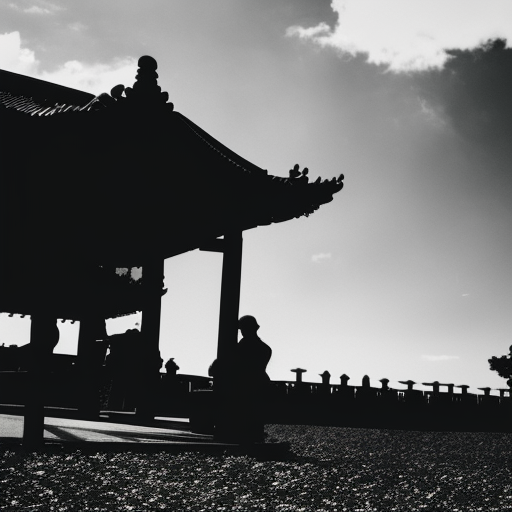Muromachi Period: A Summary
The Muromachi period, also known as the Ashikaga period, was a significant era in Japanese history that lasted from 1336 to 1573. It was named after the Muromachi district of Kyoto, where the Ashikaga shogunate established its headquarters. This period witnessed political instability, cultural flourishing, and the rise of samurai power.
Background
The Muromachi period began with the fall of the Kamakura shogunate and the rise of the Ashikaga shogunate. Ashikaga Takauji, a powerful samurai, rebelled against the Kamakura shogunate and established his own government in Kyoto. This marked the end of the Kamakura period and the beginning of the Muromachi period.
Ashikaga Shogunate
The Ashikaga shogunate ruled Japan during the Muromachi period. The first Ashikaga shogun, Takauji, faced numerous challenges, including rebellions and internal conflicts. Despite these challenges, the Ashikaga shogunate managed to maintain control over Japan for several centuries.
Political Instability
The Muromachi period was characterized by political instability and frequent civil wars. The Ashikaga shogunate struggled to maintain control over the regional warlords, known as daimyo, who often challenged the central authority. These power struggles led to the Onin War, a devastating conflict that lasted from 1467 to 1477 and resulted in the destruction of Kyoto.
Samurai Power
During the Muromachi period, the samurai class gained significant power and influence. The samurai, who were originally warriors serving the shogunate, became landowners and rulers in their own right. The daimyo, or feudal lords, controlled their territories and maintained their own armies. This decentralization of power weakened the central authority of the Ashikaga shogunate.
Cultural Flourishing
Despite the political instability, the Muromachi period witnessed a flourishing of culture, particularly in the arts. Zen Buddhism, which had gained popularity among the samurai class, greatly influenced the culture of the time. The tea ceremony, Noh theater, ink painting, and garden design all flourished during this period. Prominent artists and cultural figures, such as Zeami and Sesshu, emerged and made significant contributions to Japanese art and culture.
Foreign Relations
The Muromachi period saw increased contact with foreign countries, particularly China. Trade and cultural exchange with China flourished, leading to the introduction of new ideas, technologies, and artistic styles. Chinese influence can be seen in various aspects of Japanese culture, including architecture, ceramics, and literature.
End of the Muromachi Period
The Muromachi period came to an end with the rise of Oda Nobunaga, a powerful warlord who sought to unify Japan under his rule. Nobunaga’s forces defeated the Ashikaga shogunate and established the Azuchi-Momoyama period. This marked the transition from the medieval period to the early modern period in Japanese history.
In conclusion, the Muromachi period was a time of political instability, cultural flourishing, and the rise of samurai power in Japan. Despite the challenges faced by the Ashikaga shogunate, the period witnessed significant cultural achievements and increased foreign contact. The end of the Muromachi period marked a turning point in Japanese history, leading to the unification of Japan under new leadership.












